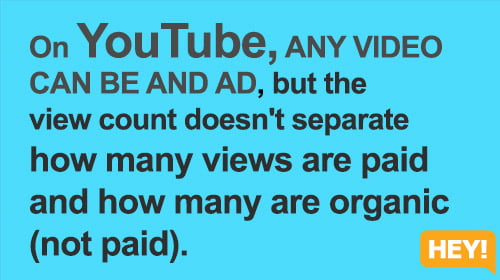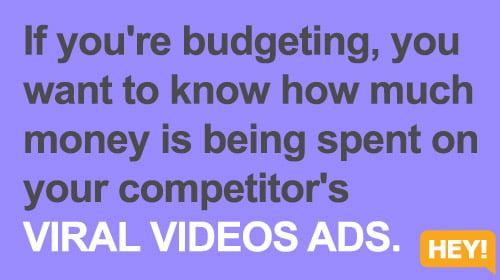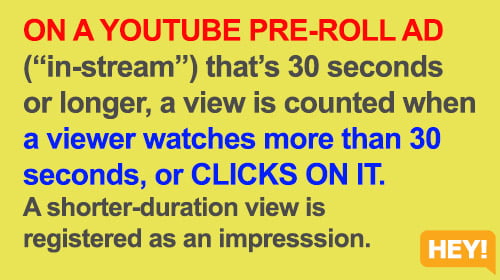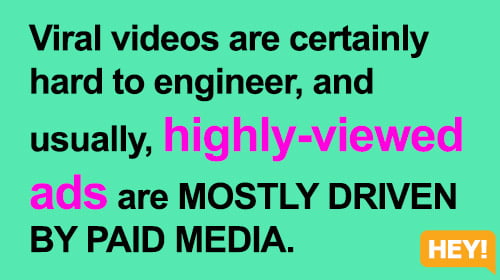Last updated on June 15th, 2024
THE GOAL:
Find out how much a business, advertiser, or competitor has spent on producing and advertising a “viral video” by analyzing their publicly-available metrics on YouTube.

WHY DO THIS?
If you are a competitor creating a YouTube video ad campaign in the same industry, you want to know how much money your competitors are spending, but it’s hard to determine.
RELATED:
How To Find A Viral Video’s Paid Views On YouTube
BEFORE YOU BEGIN:
- Know that some YouTube views are driven by advertisers using a paid media budget on the Google Ads platform.
- Know that some of the views these videos receive are organic, which means the views are not due to paid media through Google Ads.
- YouTube does not distinguish between paid views and organic views within the public viewcount, so the average viewer does not know how many views are paid and how many are not.
- To estimate the budget of an ad, you need to follow a process that relies on other public metrics to infer the paid views and other costs.
WHAT YOU’LL NEED:
- Your competitor’s YouTube video URL.
- The VidIQ browser extension Pro plan (affiliate code). This is a free tool for the basic features, but with the $10/mo. Pro plan, you can use the Historical Analysis feature, which shows how fast a video gets views over time.
- Our custom formula.

THE STEPS:
- Record the number of views the video has.
- Record the number of likes the video has.
- Use VidIQ to get a close-up of what happened with the video traffic over time. For instance:
– Did the majority of the views happen within the first couple of days the video was live?
– How many views is the video averaging per day? - Divide the number of likes on the video by the number of views.
- Historically we know that most organic videos will get at least one like per view on average, or 1% likes per view. If the likes-per-view on a video is less than 1%, it likely has a portion of its views delivered by paid media.
- Multiply the number of likes by 100. This is a good estimate of the organic or non-paid views.
- Subtract the organic views estimate from overall views. This is the paid views estimate.
- Using VidIQ’s Historical Analysis button, find out if the video got many views very suddenly then essentially stopped getting new views. If this is true, it’s likely a video that is mostly driven by paid media.
- If a video is exactly 15, 30 or 60 seconds long, it’s likely mostly driven by paid media.
- Take the paid views estimate and multiply by several cost-per-view estimates. Depending on the targeting and pricing from the ad management company, views might generally cost 2 cents, 5 cents, and 10 cents per view.
- Multiply the estimated paid views by one or all of these to determine the ranges paid overall for the ad targeting portion of the campaign.
- Add an estimated 17.5% of the ad targeting to account for the ad management fee. Adjust this estimate based on your understanding of the company managing the campaign. Some companies include their management fee inside the cost per view, others in other set fee structure, and others charge a straight management fee of usually between 10-20%.
- Add the estimated cost of video production based on your understanding of the company that produced the video, and the level of production, cost of on-camera talent, etc.

RESULTS:
You now have an estimate of how much was spent on paid views and production for the relevant video campaign.

![How Much Does A Viral Video Ad Cost? [Nike]](https://vidaction.tv/wp-content/uploads/hey084-viral-ads-nike-370x208.jpg)
